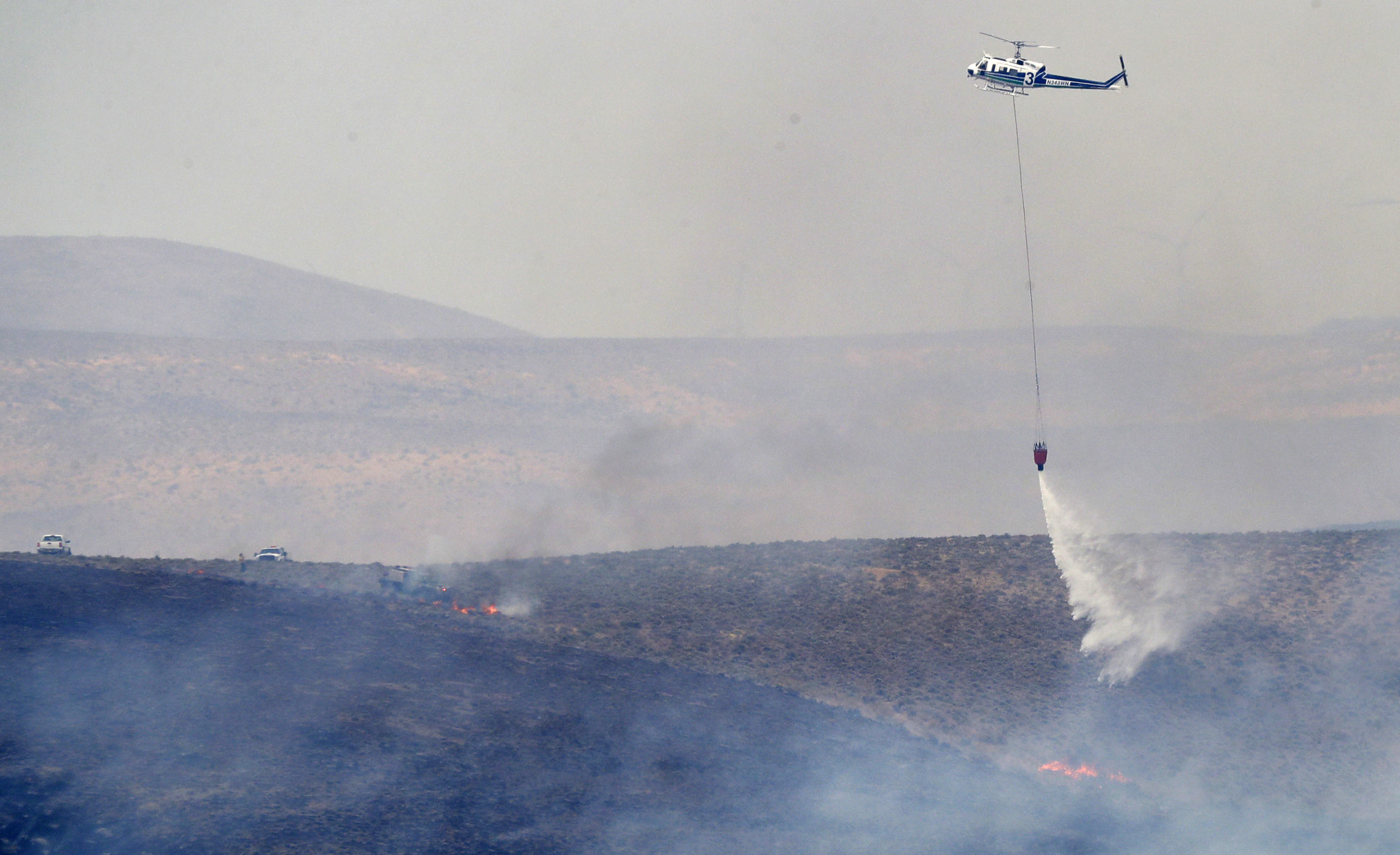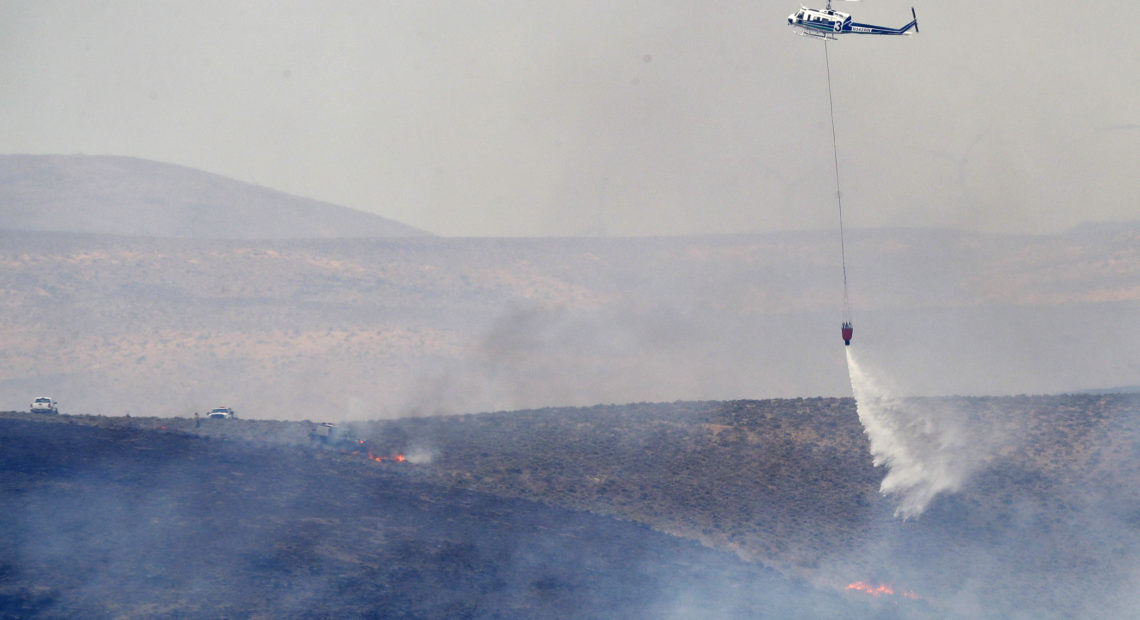
Washington Has Seen A Significant Rise In Wildfire Starts So Far This Year
READ ON
After two years of seeing a steady rise in the number of wildfires burning across Washington, the 2020 core fire season is looking to pull way ahead in wildfire starts.
But this year’s unprecedented uptick in the number of fires has an unforeseen culprit: people cleaning their yards during the pandemic.
Washington fire and land managers say they’ve seen a significant number of wildfires in “every corner of the state.” So far this year, the state Department of Natural Resources says it has responded to more than 468 wildfires of varying sizes – nearly double the average number of fires for the same time over the previous 10 years.
More than two-thirds have burned east of the Cascades. Most happened after people burned yard debris, Public Lands Commissioner Hilary Franz said Thursday.
“Everybody is following the “stay home, stay safe” order. They’re getting more time at home to do yard work. We’re seeing an unprecedented number of debris piles, and we’re seeing an unprecedented number of people that are lighting those piles on fire,” Franz said.
Franz says recent conditions have also been hot and dry, which makes outdoor burning more likely to start a fire.
New burn bans will go into effect June 26 on DNR lands in most of central and southeastern Washington.
The number of fires has been increasing over the past 10 years, according to DNR fire meteorologist Josh Clark. He says over the last decade, there were about 217 fires year-to-date on DNR-managed land.
“We have just blown that out the water for the last three years running,” Clark said.
So far this year, there have been 325 fires on DNR-managed land, as of June 23. He says right now fire conditions are near normal, and they may be even below normal over the next month. But that doesn’t mean there won’t be fires.
“DNR will likely still see fires with incredible frequency, as more humans go out on the landscape, especially after coronavirus restrictions continue to be lifted and we get closer to the summer holidays and the like,” Clark said. “It’s just that we’re not expecting fires to get as large this year.”
Human-Caused And “Mega” Fires
Most fires on DNR-managed lands are caused by people.
Large fires are considered to burn more than 300 acres in grasslands and more than 100 acres in forests, not the “mega fires” like the Carlton Complex in 2014 (it was started by a lightning strike).
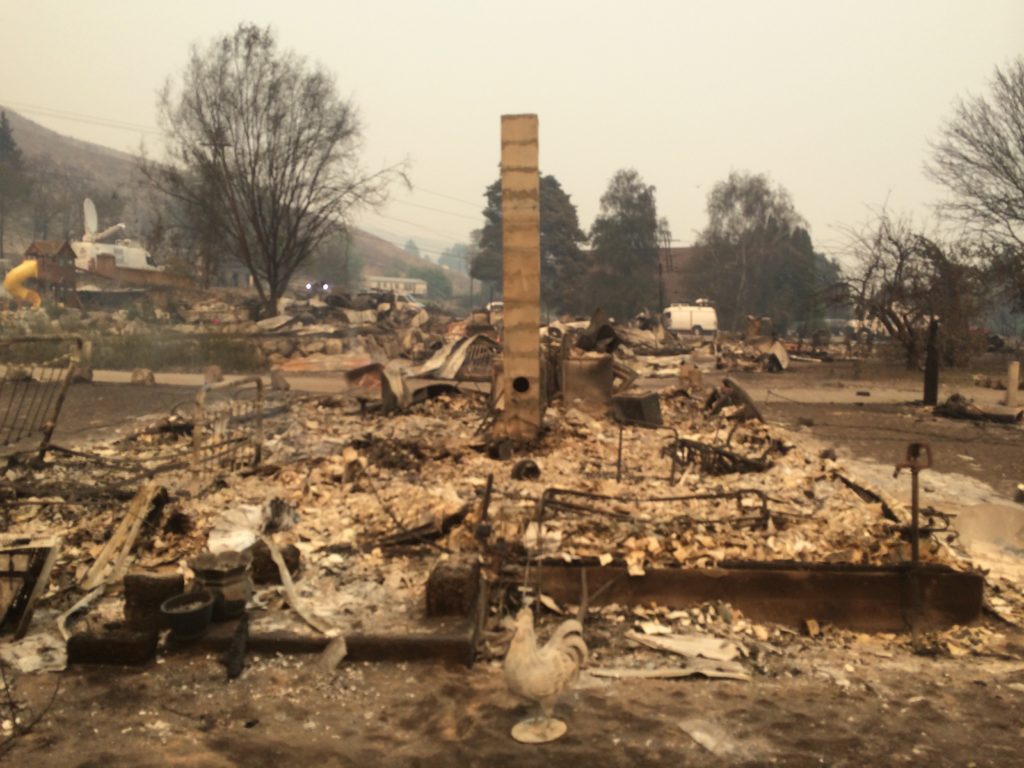
About 20 homes burned in this Pateros neighborhood during the 2014 Carlton Complex fire, which included the mayor at the time, Libby Harrison, and her mom’s home behind her. The community church behind it survived, but the pastor’s home next door burned. CREDIT: Scott A. Leadingham
Clark says it’s really difficult to predict the number of “mega fires” that may happen in a given season, but he doesn’t expect this year to be catastrophic. (A DNR spokesperson crossed both her fingers on the Zoom call when this question came up.)
Fewer mega fires would be good news as officials plan ahead to keep firefighters safe in fire camps and on lines this summer, where they’ll have to contend with a deadly virus on top of their normal jobs.
Officials moved training sessions online and have developed protocols for dealing with the coronavirus during fire season.
DNR spokesperson Janet Pearce says fire camps will look much different this year. Firefighters will stay in motels while fires are smaller. When needed, fire camps will be smaller.
“We would have to scatter. We’d have to feed folks differently and probably use more local resources instead of our kitchens because we go through a buffet line,” Pearce says.
Fire managers will also reduce the number of people in fire engines.
State officials will require firefighters to wear masks while they’re in camp, in engines or on helicopters. The flammable masks can’t be worn on the fire lines.
CORRECTION: An earlier version of this article misstated the number of fires DNR has responded to and that have occurred on DNR land, year-to-date.
Related Stories:

US Forest Service employees return to work after mass terminations
Katijo Maher, president of a local chapter National Federation of Federal Employees, stands next to a fire danger sign Tuesday in Leavenworth. Maher said she has 37 years of experience
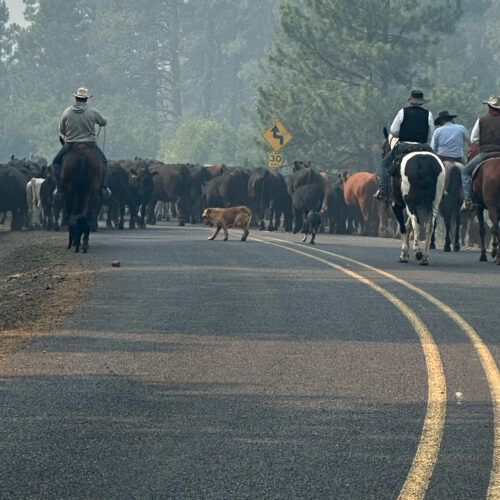
Burnt over cattle and lands: In southeast Oregon, grief-stricken ranchers are exhausted and frustrated by wildfires
Moving cattle out of a forest recently outside of Burns, Oregon. (Credit: Sabrina Maki) Listen (Runtime 4:33) Read Exhaustion and frustration: Ranchers in southeast Oregon are battling wildfire. Like many
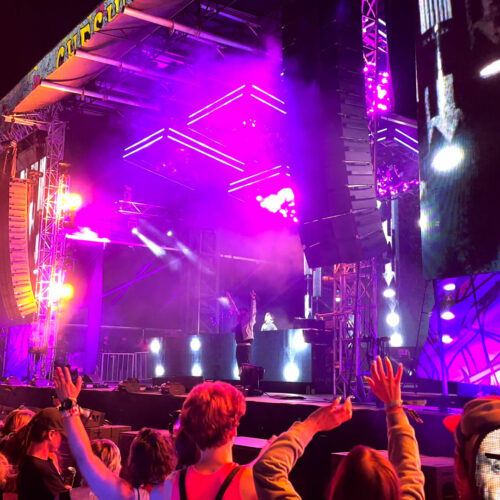
Fire at Odesza Gorge concert lasted for five minutes, law enforcement officials say
This file photo from June 17, 2023, shows Sub Focus performing at the Gorge Amphitheatre. (Credit: Northwest News Network file) Listen (Runtime :53) Read This past holiday weekend turned fiery

